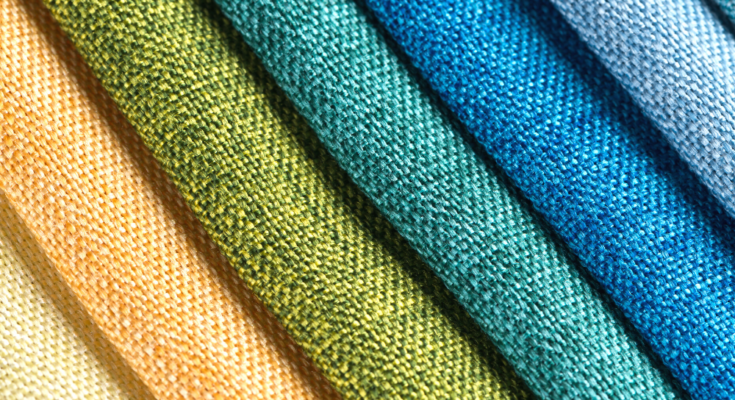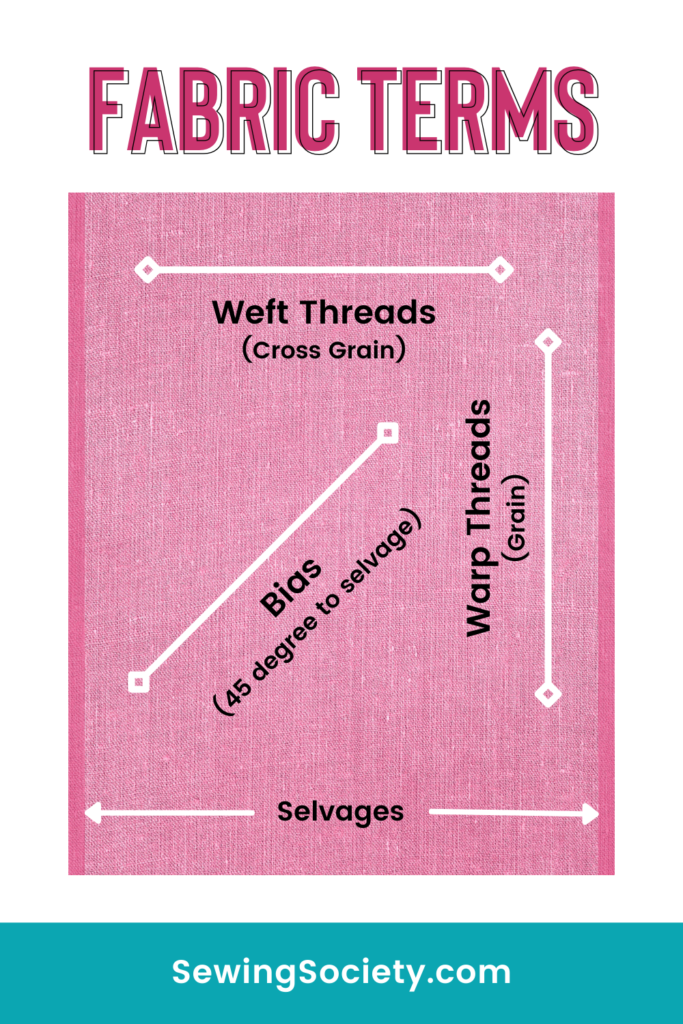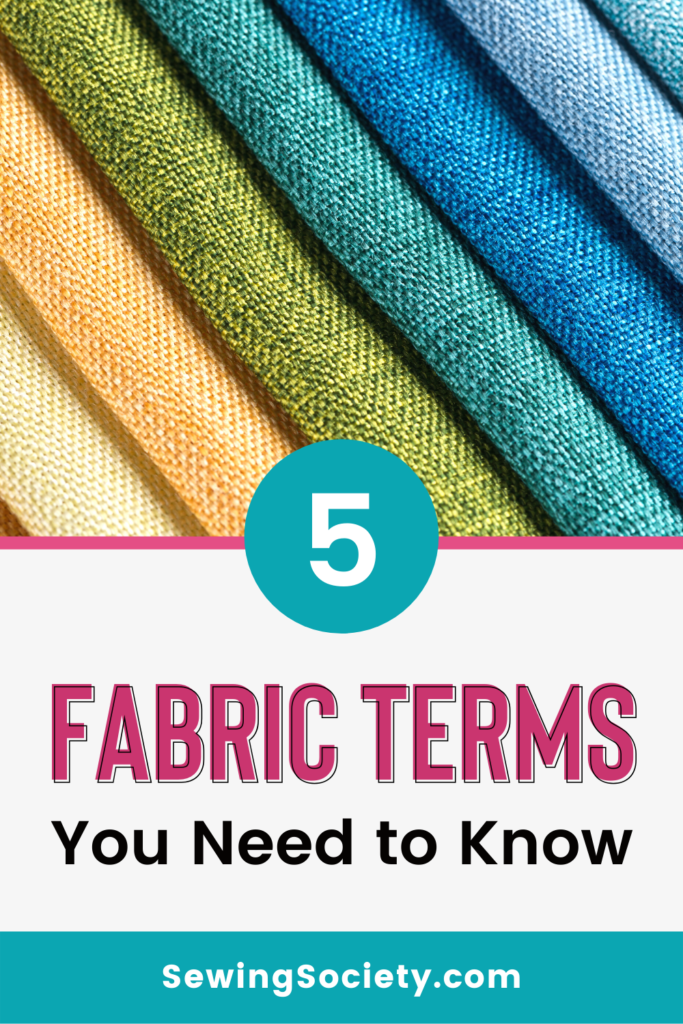Disclosure: This post may contain affiliate links. I earn a small commission when you click a link and make a purchase. Thanks for supporting SewingSociety.com!
What is the one item you need for every sewing project? > > > FABRIC!
The fabric you choose makes a huge difference in how your finished project turns out. And I’m not just talking about the color… Fabric comes in different weaves that create texture and design. That’s why it’s important to know how to choose fabric for sewing projects.
There are two main types of fabrics: knit and woven. The main difference is that knit fabric is made with interlocking loops to create stretch and woven fabric has a checkerboard pattern of threads that are stable and strong. Check out my post on the Difference Between Knit and Woven Fabric, if you want a better explanation…
All fabrics also have a right side and a wrong side. Sometimes it’s hard to tell which side is which, especially if you’re sewing satin, but typically the right side has a more vibrant color and texture.
No matter what type of fabric you choose to use for a sewing project, you’ll need to know some basic fabric terms when laying out pattern pieces and cutting your fabric for a sewing project.
Important Fabric Terms
- Selvage: When fabric is woven, the weft threads are shuttled back and forth to create a finished edge that is stiff and tightly woven. The selvage edge is very strong, and you will notice a difference from the main body of your fabric. It will not fray! Sometimes fabric information is also printed on the selvage edge. There is a selvage edge on both sides of your fabric, and it is useful in determining the grain of your fabric
- Warp: These are the threads that run along the grainline of your fabric. They are parallel to your selvage edges, and they have the most stability.
- Weft: These are the threads that run perpendicular to your selvage edges. They are often referred to as the cross grain.
- Bias: This is an imaginary 45-degree angle to your selvage edges. When you pull on your fabric, the bias has the most stretch. Many pattern pieces require you to line them up along the bias of your fabric.
- Grainline: Almost all pattern pieces have a grainline arrow printed on them. You simply line up the grainline with the warp direction of your fabric. That is how you know you are cutting your pieces out the right way.
These are the basic fabric terms you need to know, but keep in mind that every fabric is different. There are varying levels of stretch, weight, and texture. If you’re new to sewing, I suggest you spend an hour or two walking up and down the aisles at your local fabric store to get a feel for the different kinds and how they feel.
Also Read: How to Choose Fabric for a Sewing Project
Share this post on Pinterest!







One Comment on “5 Fabric Terms You Need to Know”